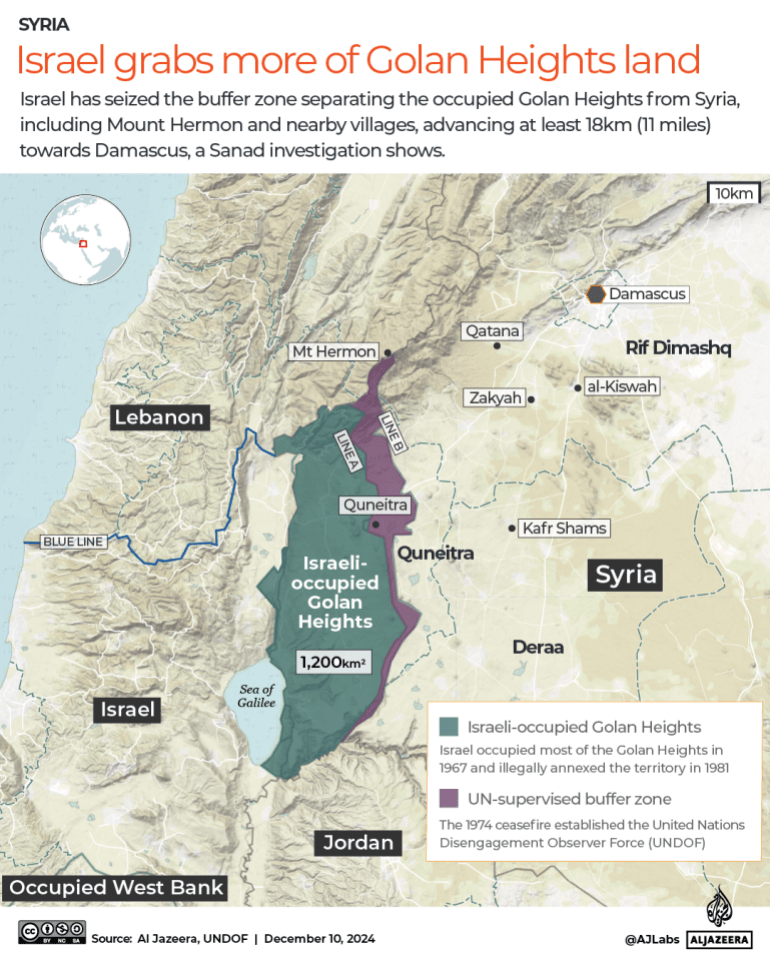The Israeli military says it shelled targets in Syria in response to a pair of projectiles that fell in open areas in the Israel-occupied Golan Heights on Tuesday.
Since December 10, 2024, just two days after the stunning collapse of more than 53 years of the al-Assad family, Israel has waged a campaign of aerial bombardment that has destroyed much of Syria’s military infrastructure, including major airports, air defence facilities, fighter jets and other strategic infrastructure.
Over the past six months, Israeli forces have launched more than 200 air, drone or artillery attacks across Syria, averaging an assault roughly every three to four days, according to the Armed Conflict Location and Event Data project (ACLED).
The map below shows the ACLED-recorded Israeli attacks between December 8 and May 30.
The bulk of the Israeli attacks have been concentrated in the southern Syrian governorates of Deraa, Damascus and Quneitra, which account for nearly 60 percent of all recorded Israeli attacks.
- Deraa was the most targeted governorate, with 57 recorded attacks, focusing on former regime military sites and suspected arms convoys.
- Damascus governorate, which hosts key military highways and logistics hubs, was attacked at least 49 times. Whereas Damascus city, the capital was attacked 18 times.
- Quneitra, adjacent to the Israeli-occupied Golan Heights, was attacked at least 25 times, many attacks were aimed at radar and surveillance infrastructure.
Israel’s movement on the ground
In the immediate aftermath of al-Assad’s ouster, Israeli troops advanced into the Syrian side of the Golan Heights, including areas within the United Nations-monitored demilitarised zone, violating the 1974 disengagement agreement with Syria.
The incursion drew widespread international criticism. The UN, along with several Arab nations, condemned Israel’s actions as breaches of international law and violations of Syria’s sovereignty.
Despite these condemnations, Israeli Defence Minister Israel Katz said in February that Israeli forces would remain in the area indefinitely to “protect Israeli citizens” and “prevent hostile entities from gaining a foothold” near the border.
Satellite imagery captured in February and analysed by Al Jazeera’s Sanad verification unit showed six military bases were being constructed in the UN-supervised buffer zone on the border with Syria.
Since taking power following the overthrow of al-Assad, President Ahmed al-Sharaa has consistently stated that his government seeks no conflict with Israel and will not permit Syria to be used by foreign actors to launch attacks.
He has condemned Israel’s continuing strikes on Syrian territory and its gradual expansion beyond the already-occupied Golan Heights.

A history of Israeli air strikes on Syria
Israel has been attacking targets in Syria for years, despite the recent rise in Israel’s air attacks on the country.
Since January 2017, ACLED data has been gathered to show how Israeli attacks have been sporadic.
Source: Aljazeera

Leave a Reply